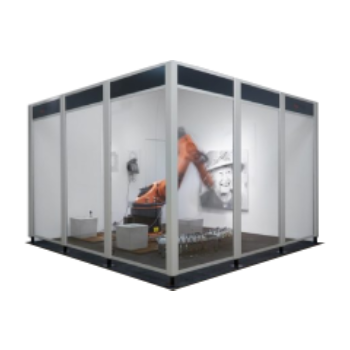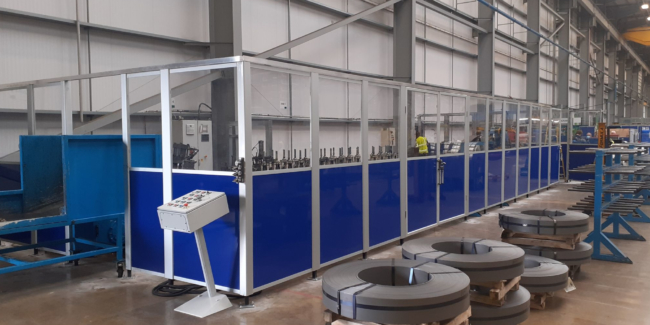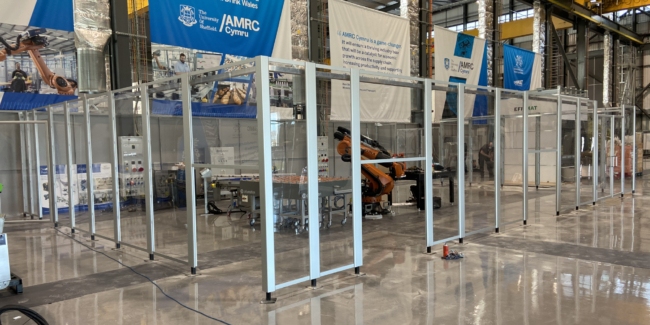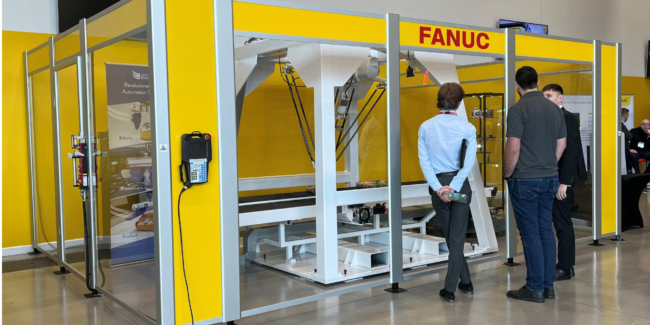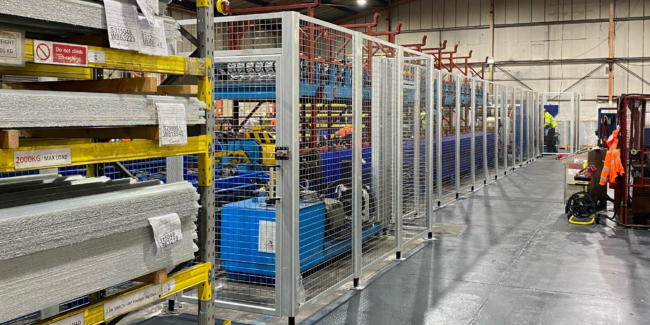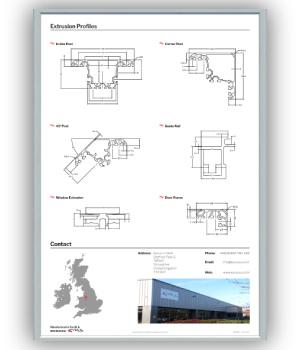Robot Enclosures
Kyrus’ range of robot enclosures can be built to your specifications

- Customise your panels from a range of colour options, with a further mesh option available
- Choose the tint of your window screen, from transparent to coloured arc weld protect
- Access doors, fitted with safety interlocks, are available as hinged or sliding
- Several integrated panel options are available, including electrical, HMI Panel, and Pendant Holder
- Adjustable floor mounting, suitable for floor or base mounted systems
- Operator controls and LED lights available for safe control
- A range of operator stations; choose from a pneumatic-powered door, manual sliding door, walk-in station with light guards, or a powered roller door With additional features, such as cable trays and wash down seals, available
Enclosures around robots is the best way to prevent unintentional injury or damage by limiting access for both operators and other workers in the production facility. The range of customised modular robot enclosures that Kyrus provides ensures seamless protection for both your automated machinery and operators, alongside a modern and sleek aesthetic. The ability to install an enclosure around your robot with our modular setup can further prevent damage to the machine, and ensure it can continue to operate correctly.
Robots have revolutionised how we work, but with this comes the risk of harm to humans interacting with the robot or working nearby. The most common hazards occur when a robot is not under normal operation, such as when undergoing programming, maintenance, repair, testing, etc.
To increase the safety of your workplace around robots, firstly a risk assessment should be drawn up; this should include the robot’s physical and operational limitations, its role and use within an operation, and any hazards that may occur during the lifecycle of the machine, including maintenance and repairs as a result of downtime. All staff that will interact with a robot should be properly trained in their role alongside the robot, and misuse of the robot should be clearly defined.
FAQ's
-
Remove all obstructions from the robot working area
-
Locate the emergency stop button
-
Check the robot is free from damage
-
Ensure that people are not in the robot working area and do not have access to this area whilst the robot is active.
Every country has its own set of Robotic Safety Standards to ensure there are clear regulations surrounding the operation of robots in the workplace; moreover, there are international standards which help unify and conglomerate the varying standards set across countries. This highlights the need for robotic safety - not only for the protection of those handling robots, but the robots themselves from misuse and unnecessary damage.
Robotic safety transcends physical safety, however, but moreover protects the robotic market. By identifying a comprehensive set of standards accessible by all, such as those demonstrated in international organisations like the International Electrotechnical Commission, the sale and use of industrial robots is regulated on a global scale. This protects and stabilises robotic markets, by allowing robots to be bought and sold internationally, which overall encourages the growth and competitiveness of the robotic market.
The systems and safety components in robot enclosures must meet compliance standards before they can be put into operation. The first step is to ensure that all electrical and pneumatic systems and components within the robot cell comply with the current relevant standard, such as IEC/EN 62095 or ISO 13849. It also means that it should be possible for these systems to operate without any compromise in normal or emergency conditions.
The next step is to ensure that the safety components not only meet standards but also ensure a compliant system. The most common safety components used in robot enclosures are light curtains, pressure mats and presence sensors. Other solutions include suction cups or barriers that can prevent people from entering an unsafe area, while some systems combine several of these elements to provide the best possible solution.
